

DON’T MISS A THING! SUBSCRIBE TO THE NEWSLETTER

- December 16, 2017
The Journey by Francesca Sanna

Francesca Sanna Official Website
Take a look inside

The Journey Resources
- Amnesty International : Using Fiction to Explore Human Rights Lesson Plans
- CILIP Carnegie and Kate Greenaway Medals : Visual Literacy Notes
- Flying Eye Books : Lessons and Activities linked to Common Core
- Teaching with Picture Books : Free lesson plan, writing template and wordsearch
- Share My Lesson : Book Discussion Guide
- Walker Books : The Journey Classroom Ideas
The Journe Book Trailers & Videos
Disclosure : This post contains affiliate links. If you purchase anything through them, I will get a small referral fee and you will be supporting me and my blog at no extra cost to you, so thank you! You can find more information here .
Did you enjoy this post? Why not share it!

Leave a Reply Cancel reply
Your email address will not be published. Required fields are marked *
This site uses Akismet to reduce spam. Learn how your comment data is processed .

- Children's Library Lady
- Site Design by Laine Sutherland Designs

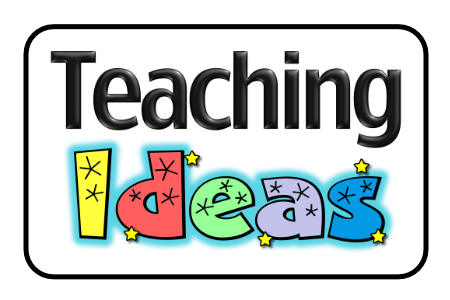
Buy This Book * More books by Aaron Becker
This wonderful book follows a little girl who draws a magic door on her bedroom wall. Through it she escapes into a world where wonder, adventure and danger abound. Red marker pen in hand, she creates a boat, a balloon and a flying carpet which carry her on a spectacular journey … who knows where?
Teaching Ideas and Resources:
- Use the title as the starting point for your own story. What might your own story about a ‘Journey’ include?
- Look at the illustrations on the front, back and inside covers. Discuss what you think it might be about.
- As you explore the illustrations in the book, try to find features that might be clues about the rest of the story.
- Think of your own captions, speech / thought bubbles to add to the illustrations.
- Make a word bank that includes words you could use to describe the people, places and events in the story.
- Create a narrative version of the story. Could you turn it into a playscript?
- Imagine that you had a pen that could be used to draw (and create) real objects. What would you draw? Could you write a new story based on this concept?
- Write a character profile about the girl. What do you know about her? How would you describe her?
- Retell the story from the girl’s point of view. Could you write a diary entry for her?
- Write a prequel to this story that explains where the magic red pen came from. Who owned it before the girl? Who made it? Why does it have special powers?
- Choose one of the settings in the story. How would you describe it?
- Write a newspaper article about a girl who goes missing through a magical doorway in her bedroom.
- Write a newspaper article about the girl who arrived in the city in a red boat.
- Stop reading when the girl first arrives at the city. Should she go in? Why (not)? Share your thoughts with others and vote on what you think should happen next.
- Why is the purple bird being hunted by the people?
- Create a game in which a girl has to rescue a special purple bird.
- Create a video that shows the illustrations in the book and is accompanied by your own narration / speech.
- Watch this trailer for the book. Could you use multimedia software to create your own book trailer?
Design Technology
- Create a model of one of the airships in the illustrations.
- Imagine that you could draw a magic door from your classroom / bedroom wall into another world. Draw the view to the other side.
- Create a picture that shows what the girl can see at your favourite point in the story.
- Could you create an additional page (or group of pages) that tells a different part of the story? Could you draw a sequel to this book?
- The illustrations were created using watercolour paints. Can you try to paint using a similar style?
- Look at the different characters in the story. Can you create your own illustrations of them? This video has some tips from the author / illustrator:
- Compose a theme tune to accompany a movie version of this story.
- Draw a map of the city the girl encounters.
- How many different forms of transport can you find in the book?
- Imagine that you had a flying carpet. Where would you travel to? Why?
- Plan your own ‘Journey’. Where will you go? How will you get there? What will you need to take?
- Find out about famous journeys, explorers and expeditions from history.
Religious education
- Why do people sometimes go on special journeys as part of their religion? Can you find out more about these?
- Look at the body language of the characters in the illustrations. What might they be thinking / feeling? How can you tell?
Handa’s Surprise
The fractions pack, you may also like, giraffes can’t dance, the colour monster, the day the crayons quit, the gruffalo, room on the broom, whatever next, leave a comment cancel reply.
Save my name, email, and website in this browser for the next time I comment.
Join our Newsletter
Get new teaching ideas and resources in your inbox every week!
FREE EMAIL UPDATES!
Picture Book Brain

By Aaron Becker
Spanish available kind of - the book is wordless, grades: 1st, 2nd, 3rd, 4th.
Summary : A lonely girl draws a magic door on her bedroom wall and through it escapes into a world where wonder, adventure, and danger abound. Red marker in hand, she creates a boat, a balloon, and a flying carpet that carry her on a spectacular journey toward an uncertain destiny. When she is captured by a sinister emperor, only an act of tremendous courage and kindness can set her free.
Lesson Plan and Google Activities
Venn Diagram – English Spanish
Main Idea and Details – English Spanish
Somebody Wanted But Then So – English Spanish
Story Elements – English Spanish
Author Website
Book Trailer Page
Author Interview
Drawing Demo with Author
LESSON PLAN AND ACTIVITIES WITH GOOGLE RESOURCES
Activity Kit from Publisher
Guide to Reading Wordless Books
Reading Guide From Author
Wordless Books, Friendship, Imagination
New and Noteworthy Caldecott Medal Winners
30 New and Notable Children’s Books About Problem Solving
19 Best Children’s Books About Imagination You Must Read
25 New and Noteworthy Wordless Picture Books

The Journey – Planning Overview
Written by Dan
Last updated December 14, 2023
Let’s take a virtual journey together, shall we? What if I told you this journey could have transformative effects on all your students? Well, it can – and that’s why our destination today is The Journey by Francesca Sanna.
This captivating picture book does more than tell a gripping story of a young immigrant’s voyage for safety – it is an essential teaching tool for helping students understand the human experience and build empathy.
With the proper guidance from you, teachers, it’s sure to create meaningful learning moments that will stay with your classrooms long after you turn the last page.
In this blog post, we’ll give you an overview of how to plan for using The Journey effectively in your lessons.
Related : For more, check out our article on Mufaro’s Beautiful Daughters by John Steptoe.

Table of Contents
Outline of “The Journey” by Francesca Sanna
Introduction.
- Introduce the main character, a mother and her two children.
- Set the scene of their home country, which has become unsafe due to war and conflict.
- The family decides to leave their home and embark on a journey to find safety.
The Journey Begins
- Describe the family’s journey through different landscapes.
- Highlight their challenges, such as hunger, exhaustion, and danger.
- Show how the mother tries to keep her children safe and calm amidst the chaos.
Meeting Other Refugees
- The family meets other refugees who share their stories of fleeing violence and persecution.
- They form bonds with some individuals, while others are too traumatised or scared to connect.
Arrival in a New Country
- After a long and treacherous journey, the family finally arrives in a new country where they hope to find safety and start a new life.
- However, they are met with suspicion and hostility from some locals who view them as outsiders or even criminals.
Settling In
- Despite these challenges, the family begins to settle into their new surroundings.
- They make friends with other refugees who have also found sanctuary in this new place.
- They also encounter kind-hearted locals who offer support and assistance.
- The story ends optimistically as the family begins to rebuild their lives in this new country.
- However, there is an underlying sense of sadness for all that they have lost along the way.
- The story serves as a reminder of the resilience of refugees and the importance of empathy and understanding towards those forced to flee their homes.
Main Themes and Characters in “The Journey” by Francesca Sanna
The refugee experience.
- This is the central theme of the story. “The Journey” explores what it’s like to be a refugee, forced to leave your home due to war or persecution and embark on a dangerous journey in search of safety.
- The story highlights refugees’ challenges, such as hunger, exhaustion, danger, and discrimination.
- The mother is the main character in the story. She is a strong and determined woman who does everything she can to keep her children safe during their journey.
- The story emphasises mothers’ sacrifices for their children, even in the most challenging circumstances.
Empathy and Understanding
- “The Journey” also touches on themes of empathy and understanding towards refugees.
- It reminds us that refugees are people like us who have been forced to flee their homes due to circumstances beyond their control.
- The story encourages readers to put themselves in the shoes of refugees and imagine what it would be like to leave everything behind.
Characters:
- The mother is a strong, brave character who prioritises her children’s safety.
- She is willing to do whatever it takes to protect them from harm, even if it means risking her own life.
- The two children in the story represent innocence and vulnerability.
- They rely on their mother for protection and guidance throughout their journey.
Other Refugees
- Throughout their journey, the family meets other refugees who have also been forced to flee their homes.
- These characters represent resilience and solidarity among refugees.
- Finally, there are also locals in the story who represent both kindness and hostility towards refugees.
- Some locals offer support and assistance, while others view refugees with suspicion or fear.
“The Journey” by Francesca Sanna encourages empathy and understanding towards refugees in several ways:
- Humanising Refugees: The story portrays refugees as people forced to leave their homes due to war, persecution, and violence. It shows they have the same hopes, dreams, and fears as anyone else.
- Depicting the Refugee Experience: The story shows the many challenges refugees face during their journey, such as hunger, exhaustion, danger, and discrimination. This helps readers understand why refugees need our support and compassion.
- Encouraging Perspective-Taking: “The Journey” encourages readers to put themselves in the shoes of refugees and imagine what it would be like to leave everything behind. This perspective-taking can help build empathy and understanding towards refugees.
- Highlighting Resilience: Despite all the challenges they face, the refugees in “The Journey” show remarkable resilience and strength of character. They band together to support and create a sense of community despite their difficult circumstances.
Teaching Opportunities
“The Journey” by Francesca Sanna is a rich text that offers several opportunities to teach literary devices. Here are some examples:
- Symbolism: The journey itself can be seen as a symbol of the refugee experience. The physical and emotional challenges the characters face on their journey represent the refugees’ struggles in real life.
- Imagery: The story is full of vivid imagery that helps to create a sense of place and emotion. For example, the illustrations of the dark forest, stormy seas, and barbed wire fences all contribute to the mood and tone of the story.
- Foreshadowing: There are several instances of foreshadowing throughout the story, such as when the mother tells her children to keep their eyes closed during a dangerous part of their journey. This creates suspense and tension for readers.
- Characterisation: The characters in “The Journey” are well-developed and complex, offering opportunities for teaching characterisation techniques such as direct and indirect characterisation.
- Theme: As mentioned earlier, “The Journey” explores themes such as motherhood, empathy, understanding, resilience, and survival. These themes can be analysed using literary devices like symbolism or imagery to deepen students’ understanding of how they are conveyed in the story.
Imagery in The Journey
Imagery is an influential tool authors use to create a vivid picture in the reader’s mind and evoke emotions. In “The Journey” by Francesca Sanna, imagery plays an essential role in creating the mood and tone of the story.
For example, the dark forests the family travels through are described as “endless” and “mysterious,” creating a sense of danger and uncertainty.
The stormy seas they cross are depicted as violent and unpredictable, adding to the feeling of peril. The barbed wire fences that they encounter symbolise imprisonment and oppression.
All these images contribute to the story’s overall mood of fear, desperation, and uncertainty. Readers can feel the tension building as they turn each page, wondering what new obstacle will appear next on this treacherous journey.
Additionally, imagery creates moments of hope and beauty amidst all this darkness. For example, when the family reaches a city where people speak their language and offer food and shelter, it is described as a “paradise.”
This momentary relief from their struggles creates a palpable joy for both characters and readers.
Overall, the imagery in “The Journey” contributes significantly to its mood and tone by creating vivid mental pictures for readers while also conveying complex emotions such as fear, hopelessness, relief, or joy.
Lesson Plan
Lesson plan: teaching literary devices in “the journey” by francesca sanna.
Students will be able to identify and analyse literary devices such as symbolism, imagery, foreshadowing, characterisation, and theme in “The Journey” by Francesca Sanna.
- Copies of “The Journey” by Francesca Sanna
- Chart paper and markers
- Graphic organizers for literary analysis (optional)
Introduction (10 minutes):
- Begin the lesson by asking students if they have ever heard of or experienced a challenging journey.
- Introduce the book “The Journey” by Francesca Sanna and explain that it is a story about a family’s journey to escape their war-torn country.
- Preview the literary devices discussed in the lesson: symbolism, imagery, foreshadowing, characterization, and theme.
Reading & Analysis (30 minutes):
- Distribute copies of the book to students and ask them to read silently.
- As students read, ask them to annotate any examples of literary devices they find in the text.
- After reading, lead a class discussion where students share their observations and evidence of literary devices used in the story.
- Use chart paper or graphic organisers to record student responses.
Extension Activities (20 minutes):
- Ask students to work in small groups to analyse one literary device in the story (e.g., symbolism).
- Provide each group with a different page or section of the book where that device is used and ask them to identify how it contributes to the mood and tone of the story.
- Have each group present their findings to the class.
Conclusion (10 minutes):
- Summarise what was learned during this lesson about how authors use literary devices to create mood, tone, and meaning.
- Please encourage students to look for examples of these devices when independently reading other texts.
- Remind students that understanding these devices can help us become better readers and writers.
Assessment:
Assess student understanding through observation during class discussions and extension activities. Alternatively, provide a written assignment where students analyse one specific literary device used in “The Journey” using evidence from the text.
Website Resources
- The Teaching Couple – This web page on TES provides a 5-week writing unit for teaching “The Journey” by Francesca Sanna to students in Key Stage 2 (ages 7-11). The lesson plans include learning objectives, a starter activity, a main activity that involves reading and discussing the book, and a complete task. It also suggests additional activities for follow-up work. The unit of work is designed to help students develop empathy, critical thinking, and creative writing skills. Link: https://www.tes.com/teaching-resource/-12671231
- Amnesty International UK provides a free downloadable book and activities pack for teaching “The Journey” by Francesca Sanna to children aged 4-11. The pack includes lesson plans, discussion questions, creative writing prompts, and art activities that explore themes of migration, displacement, and refuge. Link: https://www.amnesty.org.uk/resources/book-and-activities-journey
- Walker Books Australia offers a range of classroom ideas and resources for using “The Journey” in literacy lessons with students aged 8-12. These include comprehension questions, character analysis worksheets, visual literacy tasks, and creative writing prompts. Link: https://classroom.walkerbooks.com.au/home/wp-content/uploads/2016/06/Journey-Classroom-Ideas.pdf
- Children’s Library Lady is a website that provides book reviews and teaching resources for children’s literature. Their page on “The Journey” summarises the book’s plot, discussion questions, vocabulary exercises, and links to related resources such as videos and refugee articles. Link: https://childrenslibrarylady.com/the-journey/
In conclusion, The Journey by Francesca Sanna is more than just a captivating picture book. It’s a transformative teaching tool that can deeply impact your students’ understanding of the human experience and their ability to empathize with others.
With careful planning and thoughtful guidance, you can create unforgettable learning moments that will resonate with your students long after they’ve closed the book.
Remember, as educators, we have the power to take our students on incredible journeys, both literal and figurative. So, let’s embark on this journey together and watch as our classrooms become spaces of empathy, understanding, and growth.
FAQs: The Journey as a Teaching Tool
1. how can i use the journey in my classroom.
You can use The Journey as a springboard for discussions about immigration, empathy, and the human experience. It’s also an excellent resource for teaching narrative structure and visual literacy.
2. What age group is The Journey appropriate for?
While The Journey is a picture book, its themes are universal. It can be used effectively with a wide range of age groups, from primary school students to teenagers.
3. How does The Journey help build empathy?
The Journey tells the story of a young immigrant’s voyage for safety. By sharing this story with your students, you’re providing them with a window into someone else’s experiences, which can help foster empathy and understanding.
4. Can The Journey be integrated into other subjects?
Absolutely. The Journey can be incorporated into a variety of subjects, including social studies, language arts, and even art classes for discussions on illustration and storytelling.
5. What kind of activities can I plan around The Journey?
The possibilities are endless. You might ask students to write their own stories of a journey, create artwork inspired by the book’s illustrations, or research and present on current immigration issues.
Remember, the goal is not just to read the book but to use it as a tool to spark meaningful conversations and learning opportunities.
Related Posts
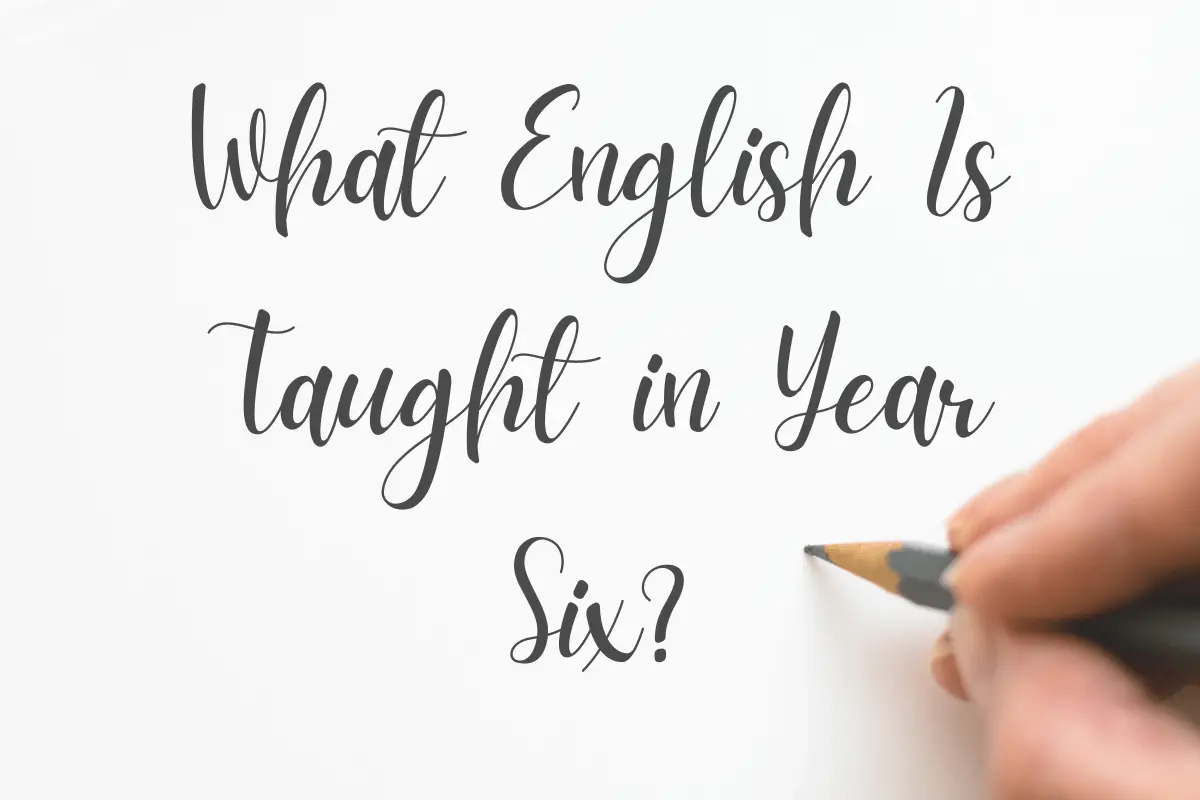
About The Author
I'm Dan Higgins, one of the faces behind The Teaching Couple. With 15 years in the education sector and a decade as a teacher, I've witnessed the highs and lows of school life. Over the years, my passion for supporting fellow teachers and making school more bearable has grown. The Teaching Couple is my platform to share strategies, tips, and insights from my journey. Together, we can shape a better school experience for all.

Join our email list to receive the latest updates.
Add your form here
- Primary Hub
- Art & Design
- Design & Technology
- Health & Wellbeing
- Secondary Hub
- Citizenship
- Primary CPD
- Secondary CPD
- Book Awards
- All Products
- Primary Products
- Secondary Products
- School Trips
- Trip Directory
- Trips by Subject
- Trips by Type
- Trips by Region
- Submit a Trip Venue
Trending stories

Top results

- Teaching Resources
- Journey By Aaron Becker Inference And Visual Storytelling For Ks2 In This W
Journey by Aaron Becker – KS2 cross-curricular planning

Three-page PDF featuring KS2 cross-curricular activity ideas
Art & Design , English
If a picture paints a thousand words, it’s easy to see why picture book Journey by Aaron Becker tells such a fantastical, epic tale.
With so much to look at and think about, Journey by Aaron Becker is a book that you can read on many levels. As Becker says in a mini-documentary on his website : “Each page has to answer questions from the previous spread as well as introducing whatever might be happening next”.
Taken as a whole, his illustrations provide a rich and memorable reading experience that will inspire much in the way of thinking and talking , and make a wonderful starting point for creative projects of all kinds.
What is Journey by Aaron Becker about?
A lonely girl draws a door on her bedroom wall and steps into another world. Aided by her magic crayon she travels through this strange, new place. Shifting landscapes give way to a remarkable city where there’s a villain to confront, and the girl needs all her courage and resourcefulness in order to survive.
She does, of course, and goes home with the greatest treasure of all – a friend.
In this glorious – and completely wordless – picture book, the timeless appeal of Aaron Becker’s story is more than matched by his illustrations, which crackle with so much expressive energy that readers barely notice the absence of text.
Becker worked as a designer in the film industry before creating Journey. His experience is evident in the book’s grandly conceived, yet intimately detailed, spreads.
Executed in watercolour, a demanding medium that requires a delicate balance between control and ‘letting go’, the resulting artwork is gently memorable yet utterly compelling.
Carey Fluker Hunt is Creative Projects Manager at Seven Stories , the National Centre for Children’s Books in Newcastle Upon Tyne.
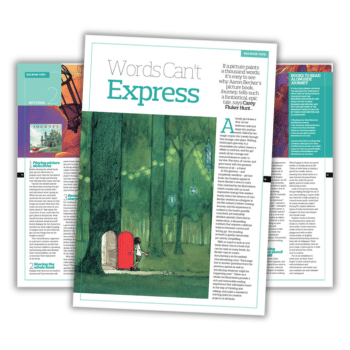
Similar resources
- How to write a letter m – Letter formation handwriting worksheet
- Rose Meets Mr Wintergarten – KS1 planning and activities
- No Breathing in Class – Creating characterisation in poetry
- Mexico KS2 – Learn sculpture and folk art with alebrijes
- Leaf by Sandra Dieckmann – How to use it in KS1 and KS2
Sign up to our newsletter
You'll also receive regular updates from Teachwire with free lesson plans, great new teaching ideas, offers and more. (You can unsubscribe at any time.)
Which sectors are you interested in?
Early Years
Thank you for signing up to our emails!
Explore teaching packs

Why join Teachwire?
Get what you need to become a better teacher with unlimited access to exclusive free classroom resources and expert CPD downloads.
Exclusive classroom resource downloads
Free worksheets and lesson plans
CPD downloads, written by experts
Resource packs to supercharge your planning
Special web-only magazine editions
Educational podcasts & resources
Access to free literacy webinars
Newsletters and offers
Create free account
By signing up you agree to our terms and conditions and privacy policy .
Already have an account? Log in here
Thanks, you're almost there
To help us show you teaching resources, downloads and more you’ll love, complete your profile below.
Welcome to Teachwire!
Set up your account.
Lorem ipsum dolor sit amet consectetur adipisicing elit. Commodi nulla quos inventore beatae tenetur.
I would like to receive regular updates from Teachwire with free lesson plans, great new teaching ideas, offers and more. (You can unsubscribe at any time.)
Log in to Teachwire
Not registered with Teachwire? Sign up for free
Reset Password
Remembered your password? Login here


The Journey
Free lesson plan, writing template and printable word-search puzzles for kids.
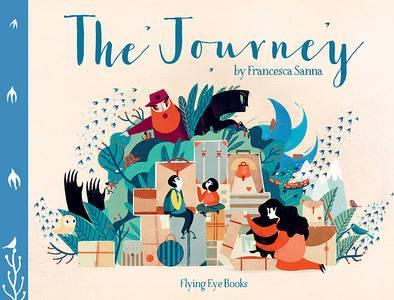
Best suited to:
Years 2 – 6
KLAs covered:
English (visual literacy, point of view), PDH (empathy), geography
- what is a refugee?
- why and how people become refugees;
- the journey of refugees: what happens when people leave their homes and seek safety in another country;
- how it feels to leave home and become a refugee;
- the difficulties and uncertainty encountered by refugees;
- how illustrators use colour and artistic techniques to create mood and emotion and to demonstrate relationships;
Need to know:
- the book begins by showing the family enjoying time together at the beach, just like families the world over;
- a mother and her son and daughter flee a war in their country after the children’s father has been killed;
- the story is told through the eyes of the little girl in the form of a simple narrative;
- the family initially flees in their car, then travels by getting lifts with other people, on foot, by ferry and finally by train;
- the family is fleeing Syria, though this is not stated;
- the graphical illustrations are powerful and unusual and engaging, for older children and for adults, as well as for younger children;
- the word refugee is not mentioned in the text. Migration is mentioned on the last page;
- the this book is suggested for 3-6-year-olds but I suggest using it for children aged up to 12 and even older;
- the author explains at the end of the book that the story was inspired by her meeting in a refugee centre in Italy with two girls who had made similar journeys. She wrote the book as a t ribute to their plight and strength;
Discussion Questions (before reading):
- read the title and discuss the cover: what do you see? What do you think the story will be about? Who do you think the people on the cover are? How would you describe the illustrations and their style?
- read the author’s name and, for younger children, revise/introduce the words: author and illustrator. Why do you think there is only one name on the cover? (author and illustrator are the same);
- introduce/revise the meaning of the word chaos (complete disorder and confusion);
- introduce/revise the meaning of the words migrating/migration;
- introduce/revise the meaning of the word border (countries have borders with other countries; Australia does not because it’s an island);
- especially for younger children: what does the word journey mean? Does the word mean/imply a short trip or travelling for a long time?
- explain to the children that this book is based on true stories of some young refugees that the author met after they’d escaped from their country. Tell them that this kind of journey really happens;
- discuss the word refugee. What does it mean? (someone who has to leave their home because they are not safe there);
Discussion Questions (while reading):
(The numbers refer to each double-page spread).
Page 1: who is in this family? How do they feel? Why do you think might be telling the story? Why do you think the sea is draw in black? Page 9: why do you think the family are leaving things behind? Page 12: do you think the mother never feels scared? How do you think she feels in this illustration? What do you think the family will do now? Page 16: what does capsize mean? Page 20: what does migrating mean?
Discussion Questions (after reading):
- what did you think about the story? Did you like it? Why or why not?
- can you imagine having to leave your home. your friends and your country. How would you feel? What would you take?
- what do we call people who have to leave their country to find a safe place to live?
- how do you think the children felt when they had to leave their home? How do you think their mother felt? (write these emotion words on the classroom whiteboard);
- which country do you think this family is escaping from? (it’s not mentioned but the author has said it’s Syria). Show the children on the classroom’s globe the general areas where there are refugees today (Sudan, Syria/Turkey/Greece, Bangladesh/Thailand/Burma). Tell them that, sadly, there are always people fleeing their homes and becoming refugees;
- the story ends without telling us if the family find a safe life and where they go. Why do you think the author ends the story this way? Do you like this ending?
- Years 5 & 6: discuss point of view (POV). This story is told from the little girl’s point of view. How might it change if the story was told from the mother’s point of view?
Exploring Visual Literacy
This lesson can be modified for use with younger children but is best suited to children in Years 3-6.
The illustrations in this book do not simply illustrate what the words tell us. The illustrations create different moods on different pages, evoke a range of emotional responses in the reader and suggest relationships between the characters which add to the power of the story. I suggest making time to read the book a second time, focusing on the images as you read each page.
Start with the end-papers (inside the front cover), which are wonderful. What can the children see? If they don’t mention it, point out the broken white line. What does this show?
Spend time looking together at each double-page spread and ask:
- what do you see?
- why do you think the illustrator has drawn it like this/used these colours?
- how does this image make you feel?
Note the following but allow the children to make their own observations. (The numbers refer to each double-page spread).
Page 1: the sea is black. This is unusual and signifies something. Danger? Threat? Page 2: the sea has become a grasping, threatening creature with sharp claws. It destroys the family’s life and is chasing them. Page 3: the black creature has engulfed them, taken away the children’s father and made their lives black. Page 4: a picture of the family is juxtaposed with a picture of the mother comforting her children, without the father. The black hands still threaten. Pages 5, 6 & 7: the colours of the illustrations have changed from black/dark on the previous pages to greens and lighter colours on these pages. Does this change signal a move from danger and threat to hope and calm? Pages 8 & 9: what is happening here? Who is driving and why does that change? Why do they have to leave some thing behind? What do you notice about the colours? Page 10: why is it dark? What is a border? How does this place make you feel? Why is the family so small? Page 11: why do you think the guard is so big and looming over the family, while the family is so small and looking up? (to emphasise the threat he poses, the power imbalance and the fear the family feels). Why are the family not allowed to cross the border? Do you think they should be allowed? Why or why not? Page 12: can you see any differences between these pictures? (the picture on the left is drawn in lighter colours and the environment seems less threatening; eyes watching and the hands in the second image imply danger). Why does the mother wait until the children are asleep to allow herself to cry? How would you feel if you were here with your mother and brother or sister? Page 13: notice the size of the border guards. Think about the fairy tales you have heard. Does anything about this illustration remind you of a fairy tale? (fairy tales are often set in forests; someone is chasing the family, there is danger). What do you think the guards want to do with the family? The family seem to be running in the direction of something or someone. What or who do you think it is? How does the illustrator make the creature blend in with the forest? Page 14: who is the man paid by the mother? Why does she pay him? Is he good or bad? How is he drawn and why? (he is shown as a large, black monster-like creature; he is helping but he is also frightening and a possible threat); Page 15: why are the boat and the people drawn as very small? Do you think that all the people will fit in the small boat? Notice that the colour scheme is lighter and uses calmer greens. Why do you think the illustrator has chosen these colours? How does this picture make you feel? Page 16: what can you see under the sea? Again, the boat is quite small in this illustration. Why? Page 17: why are the waves and the rest of the illustration dark and the fairies bright? Why is the boat small and the waves and the fairies big? Why do they tell each other new stories? (they are beginning to feel hopeful and to look towards the future; to make themselves feel better); Page 18: where is the family? Why do you think we can only see the mother’s face? How do you think the mother feels now? (hopeful, tired). What is a lighthouse and what does it symbolise? (protection from danger, arrival, safety). Page 19: how do you think the family feels about travelling on a train, rather than a boat? How long do you think the family has been travelling for now? How do you think the family is feeling? How would you be feeling if you were in their position? The train is orange and red. Why do you think the illustrator has chosen to draw it in these colours? (they create a happy, positive mood do the colours convey? How does this illustration make you feel? Page 20: the colour scheme in this illustration is lighter and more positive with no black. Why do you think the author has drawn the family riding on the neck of a bird?
- discuss the emotion words you wrote on the classroom whiteboard. Ask the children to draw a picture of the family and what was happening in one part of the story. Children describe what was happening and how they think the characters felt;
- children draw and/or write about their favourite part of the story;
- children write about how they felt when listening to the story and illustrate their work. What part of the story made them feel that way? Why?
- children re-tell the story using words and/or drawings;
- children write a book review of the book, mentioning the name of the author/illustrator, summarising the story and explaining what they liked and didn’t like about it;
- sequencing activity: children retell the story using the format: First … Then … Next … Finally …
- children write about refugees. They describe what a refugee is, why people become refugees and whether they think we should help them, giving reasons for their opinions. Should we allow them to live in our country? What are some other ways we could help them?
- children imagine they are a refugee child and write a letter to a friend about their experiences. What was their journey like? Who did they leave with? How did they feel at various times during the journey? Where are they now?
- children re-write the story from the mother’s point of view. How does she feel? children complete a book review, outlining the story, describing the characters and explaining why they liked or didn’t like the book;
Your free, printable word-search puzzles and writing template
These free, printable word-search puzzles for kids are great for building and reinforcing the vocabulary used when discussing The Journey. They’re especially helpful for EAL/D students.
There are three different puzzles in this file to enable you to differentiate the activity according to the learning needs of your students.
Download and print our free writing template for use with the picture book The Journey here (PDF).
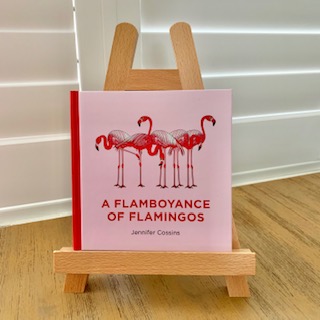
- Try for free
Journey Activity Kit
Excerpted from
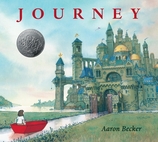
A lonely girl draws a magic door on her bedroom wall and through it escapes into a world where wonder, adventure, and danger abound. Red marker in hand, she creates a boat, a balloon, and a flying carpet that carry her on a spectacular journey toward an uncertain destiny. When she is captured by a sinister emperor, only an act of tremendous courage and kindness can set her free. Can it also lead her home and to her heart’s desire? With supple line, luminous color, and nimble flights of fancy, author-illustrator Aaron Becker launches an ordinary child on an extraordinary journey toward her greatest and most exciting adventure of all.

Featured 3th Grade Resources

Related Resources


TEACHING RESOURCES
Journey by aaron becker 7 - 9.

A beautiful wordless picture filled with adventure and wonder. Our protagonist feels alone in the grey city that surrounds her and traps her. She wishes to travel and to see the world and for this to happen she will have to do it for herself. With just a swipe of chalk and a lot of imagination she travels to far away lands filled with wonder and mystery; beauty and danger.
Writing Outcomes
- Setting description
- narrative sequel
Topic Links
- Quest by Aaron Becker
- Return by Aaron Becker
- Little Boat on Literacy Shed
- Loteria De Navidad Literacy Shed
Buy This Book
Lesson Planning
Teacher resources.
- International
- Schools directory
- Resources Jobs Schools directory News Search

KS2 - The Journey by Francesca Sanna - 5 Week Writing Unit
Subject: English
Age range: 7-11
Resource type: Unit of work
Last updated
14 February 2024
- Share through email
- Share through twitter
- Share through linkedin
- Share through facebook
- Share through pinterest

Introducing our meticulously crafted teaching unit that draws inspiration from the powerful narrative of Francesca Sanna’s “The Journey”. This 5-week writing unit is designed to captivate students while fostering a deep understanding of the refugee experience.
Key Features: Developed in line with Power of Reading Plans Comprises plans, slides, resources, and differentiated activities Fully adaptable to align with your unique teaching approach
“The Journey” is Francesca Sanna’s debut picture book that beautifully encapsulates the experiences of refugees from diverse backgrounds. The narrative is straightforward and easy to comprehend, while the stunning illustrations depict the varied landscapes and emotional trajectories of a family seeking refuge. While ending on a note of hope, the book underscores the persistent uncertainty that many refugees face.
Primary Goals of this Teaching Sequence:
- Enrich students’ comprehension and appreciation of the struggles encountered by refugees.
- Cultivate empathy.
- Delve into the concept of universal human rights and freedoms.
Spanning roughly 26 sessions, this teaching sequence offers a wealth of opportunities for educators to impart advanced reading and writing skills through a poignant and challenging text. The striking illustrations invite reader engagement and reflection on intricate themes, facilitating a thorough exploration of sensitive content and inspiring genuine, creative responses.
Please ensure all students are emotionally equipped to engage with this text due to its sensitive nature. Teachers should take into account their students’ prior experiences and use this insight to gauge the depth of exploration into the themes presented.
Tes paid licence How can I reuse this?
Your rating is required to reflect your happiness.
It's good to leave some feedback.
Something went wrong, please try again later.
MillieandEvie
Me too, cannot find week 1 planning - please forward.
Empty reply does not make any sense for the end user
bexsambrook1
I cannot seem to find week 1s plan
victoria_cardwell
Great resources- thank you for the pdf copy!
The_Teaching_Couple
Hi Victoria, it is just the first week that is in a Smart Notebook format. If you give me your email address I can send you a link for the slides in a PDF format? I have also updated the Resource on TES with the PDF attached so if you are able to re-download the resource it should be there (I'm not sure if you can do that without paying again, if you need to pay don't do it).
Report this resource to let us know if it violates our terms and conditions. Our customer service team will review your report and will be in touch.
Not quite what you were looking for? Search by keyword to find the right resource:
Writing Root Back to List
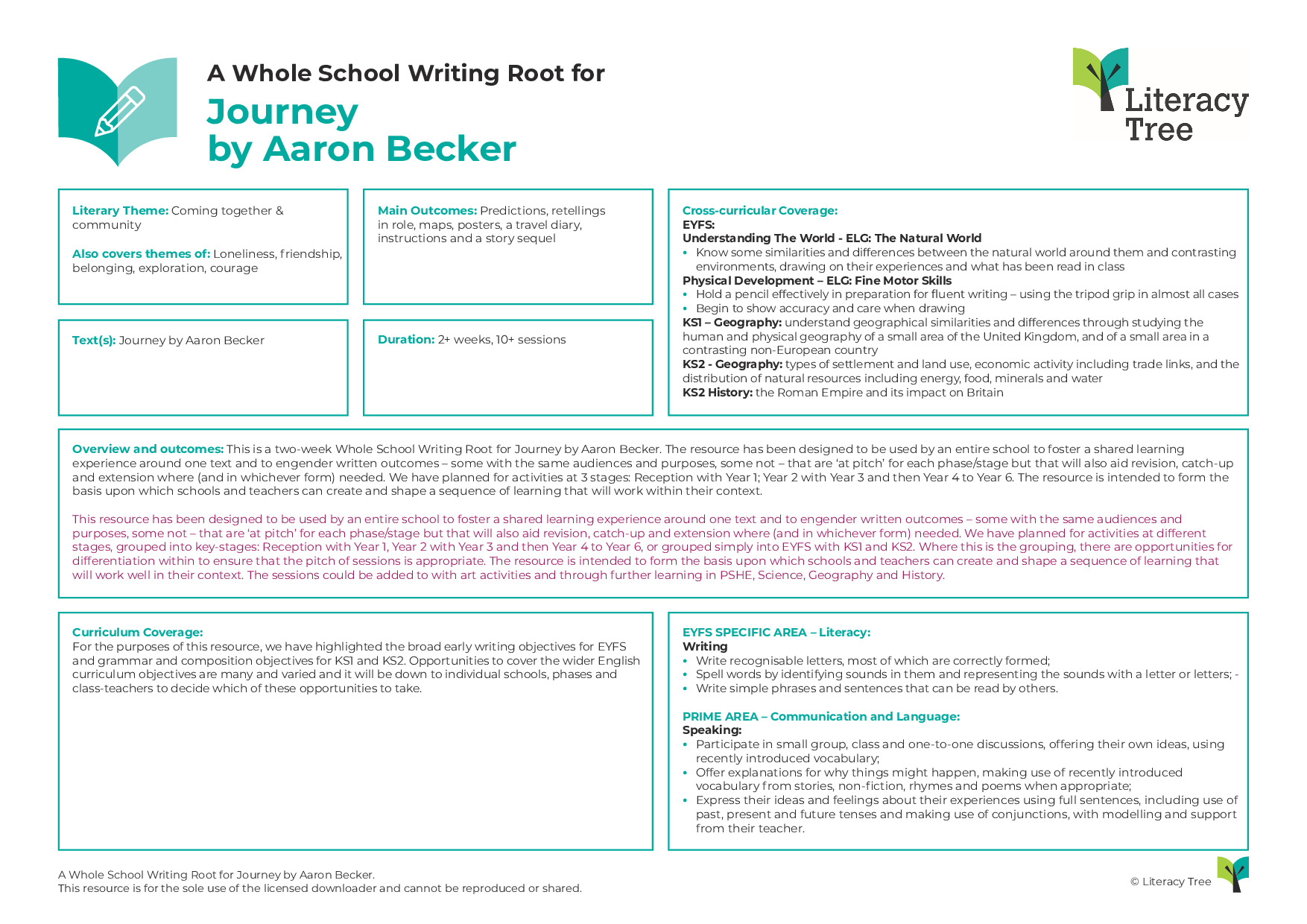
Resource written by
Pippa mcgeoch.
Senior Consultant
Resource Preview
A writing root for journey.
KS: Lower KS2, R & KS1, Upper KS2
Year Group: Reception, Year 1, Year 2, Year 3, Year 4, Year 5, Year 6
Literary Theme: Coming together & community
Author(s): Aaron Becker
"The most fantastic way to launch the year: our whole primary school is excited to write."
Anna Chidzey, whole school, British International School Riyadh
- Description
Main Outcome(s):
Predictions, retellings in role, maps, posters, a travel diary, instructions and a story sequel.
10+ sessions, 2+ weeks
Overview and Outcomes:
This is a two-week Whole School Writing Root for Journey by Aaron Becker. The resource has been designed to be used by an entire school to foster a shared learning experience around one text and to engender written outcomes – some with the same audiences and purposes, some not – that are ‘at pitch’ for each phase/stage but that will also aid revision, catch-up and extension where (and in whichever form) needed. We have planned for activities at 3 stages: Reception with Year 1; Year 2 with Year 3 and then Year 4 to Year 6. The resource is intended to form the basis upon which schools and teachers can create and shape a sequence of learning that will work within their context. The sessions could be added to with art activities and through further learning in PSHE, Science, Geography and History.
Synopsis of Text:
The winner of the prestigious Caldecott Honor, and described by the New York Times as 'a masterwork', Aaron Becker's stunning, wordless picture book debut about self-determination and unexpected friendship follows a little girl who draws a magic door on her bedroom wall. Through it she escapes into a world where wonder, adventure and danger abound. Red marker pen in hand, she creates a boat, a balloon and a flying carpet which carry her on a spectacular journey ... who knows where? When she is captured by a sinister emperor, only an act of tremendous courage and kindness can set her free. Can it also guide her home and to happiness? In this exquisitely illustrated book, an ordinary child is launched on an extraordinary, magical journey towards her greatest and most rewarding adventure of all...
Wordless, fantasy worlds, loneliness, companionship
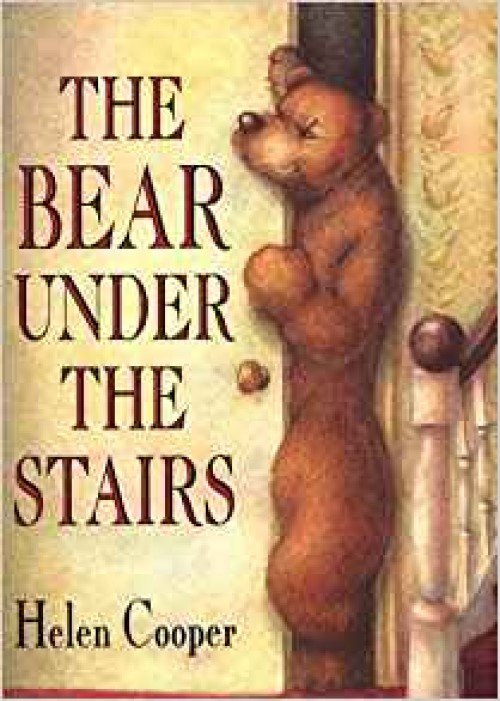
A Spelling Seed for The Bear Under the Stairs
KS: R & KS1
Year Group: Year 2
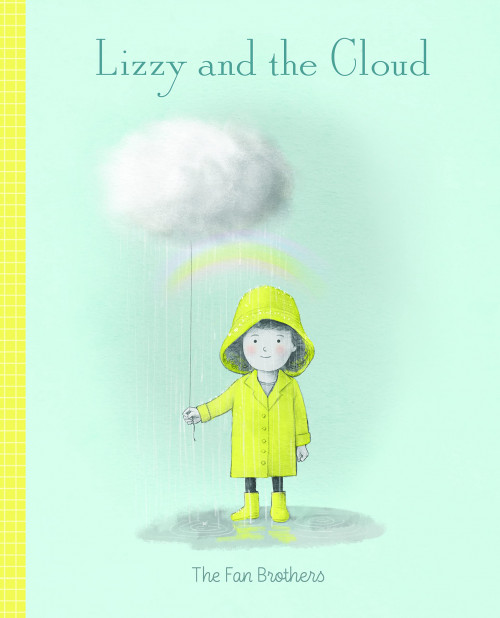
A Writing Root for Lizzy and the Cloud
KS: Lower KS2

A Writing Root for The Last Wild
KS: Upper KS2
Year Group: Year 6
Looking for more in Learning resources ?
Using Journey for a cross-curricular book project
This resource will support you to use the wordless picture book Journey by Aaron Becker as part of a whole school project.
The resource contains differentiated cross-curricular activities for Early, First and Second levels, adaptable to use as part of a whole school core book project, and includes ideas to support:
- Creative writing
- Expressive arts: art, drama and music
- Health and wellbeing
- Critical thinking and problem solving
- Digital technology
- Skills for learning: visual literacy
Wordless picture books are a great starting point for a whole school project, as they are accessible to all learners. If you are new to using wordless picture books, you can find more ideas and support in our using wordless picture books resource .
- Journey learning resource (DOC) (this link will open in a new window) 1192.5 kb
- Journey learning resource (PDF) (this link will open in a new window) 787.6 kb
Accessibility
All popular browsers allow zooming in and out by pressing the Ctrl (Cmd in OS X) and + or - keys. Or alternatively hold down the Ctrl key and scroll up or down with the mouse.
Line height
Book and activities: the journey.
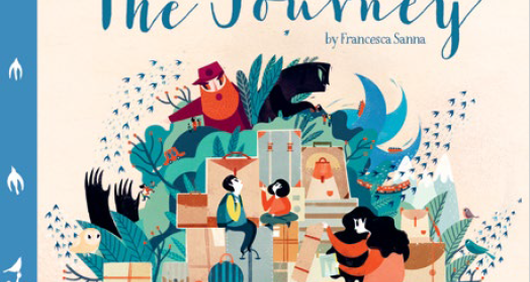
This beautifully illustrated picture book introduces a powerful and moving perspective on migration for readers of all ages. Told through the eyes of a young girl, the story explores the unimaginable decisions faced by a mother and her two children as they are forced to flee their home and everyone they know to escape the turmoil of war.
The book’s inspiration came when author and illustrator Francesca Sanna met two girls in a refugee centre in Italy. She then began interviewing more refugee families in Europe, and created this book as a tribute to their plight and strength.
A simple narrative and dramatic and meaningful graphics offer ways for teachers to open discussions about refugees and what it would be like to live through such a harrowing journey. The book also addresses many other questions about home, war, fear, change and safety, which can only help to change perceptions of the current refugee crisis.
The questions in this resource encourage discussion and critical thinking as you read through the text. We have chosen several spreads to examine closely. Start each with ‘What can you see?’ in order to give the reader space to respond freely. The questions can be used with individuals, small groups or whole classes if the book can be projected.
While you’re here…
Like you, we are horrified by the violence and the civilian death toll in Gaza, Israel and the rest of the Occupied Palestinian Territories. We’re calling for an immediate ceasefire by all parties in the occupied Gaza Strip and Israel to prevent further loss of civilian lives. Amnesty International is investigating mass summary killings, indiscriminate and disproportionate attacks, hostage-taking, and siege tactics.
As ever, our mission to protect human rights remains. Please donate today to help expose war crimes and protect human rights. Thank you.

- Children's Books
- Activities, Crafts & Games

Download the free Kindle app and start reading Kindle books instantly on your smartphone, tablet, or computer - no Kindle device required .
Read instantly on your browser with Kindle for Web.
Using your mobile phone camera - scan the code below and download the Kindle app.

Image Unavailable

- To view this video download Flash Player
Follow the author

The Journey Trilogy Hardcover – November 7, 2017
- Reading age 4 - 8 years
- Print length 120 pages
- Language English
- Grade level Preschool - 3
- Dimensions 11 x 1.75 x 9.75 inches
- Publisher Candlewick
- Publication date November 7, 2017
- ISBN-10 0763695378
- ISBN-13 978-0763695378
- See all details
Similar items that may deliver to you quickly

Editorial Reviews
About the author, product details.
- Publisher : Candlewick; Slp edition (November 7, 2017)
- Language : English
- Hardcover : 120 pages
- ISBN-10 : 0763695378
- ISBN-13 : 978-0763695378
- Reading age : 4 - 8 years
- Grade level : Preschool - 3
- Item Weight : 4.1 pounds
- Dimensions : 11 x 1.75 x 9.75 inches
- #27,350 in Children's Fantasy & Magic Books
- #38,111 in Children's Action & Adventure Books (Books)
- #44,218 in Children's Activity Books (Books)
About the author
Aaron becker.
Born in Baltimore, Aaron Becker moved to California to attend Pomona College where he scored his first illustration job designing t-shirts for his water polo team. Since then, he's traveled to Kenya, Japan, Sweden, and Tahiti backpacking around while looking for good things to eat and feeding his imagination. He now lives with his family in Amherst, MA where he's busy at work on his next book project. You can find out more about what he's been up to lately at storybreathing.com.
Customer reviews
Customer Reviews, including Product Star Ratings help customers to learn more about the product and decide whether it is the right product for them.
To calculate the overall star rating and percentage breakdown by star, we don’t use a simple average. Instead, our system considers things like how recent a review is and if the reviewer bought the item on Amazon. It also analyzed reviews to verify trustworthiness.
- Sort reviews by Top reviews Most recent Top reviews
Top reviews from the United States
There was a problem filtering reviews right now. please try again later..
Top reviews from other countries
- Amazon Newsletter
- About Amazon
- Accessibility
- Sustainability
- Press Center
- Investor Relations
- Amazon Devices
- Amazon Science
- Sell on Amazon
- Sell apps on Amazon
- Supply to Amazon
- Protect & Build Your Brand
- Become an Affiliate
- Become a Delivery Driver
- Start a Package Delivery Business
- Advertise Your Products
- Self-Publish with Us
- Become an Amazon Hub Partner
- › See More Ways to Make Money
- Amazon Visa
- Amazon Store Card
- Amazon Secured Card
- Amazon Business Card
- Shop with Points
- Credit Card Marketplace
- Reload Your Balance
- Amazon Currency Converter
- Your Account
- Your Orders
- Shipping Rates & Policies
- Amazon Prime
- Returns & Replacements
- Manage Your Content and Devices
- Recalls and Product Safety Alerts
- Conditions of Use
- Privacy Notice
- Consumer Health Data Privacy Disclosure
- Your Ads Privacy Choices
journey wordless book
All Formats
Resource types, all resource types.
- Rating Count
- Price (Ascending)
- Price (Descending)
- Most Recent
Journey wordless book
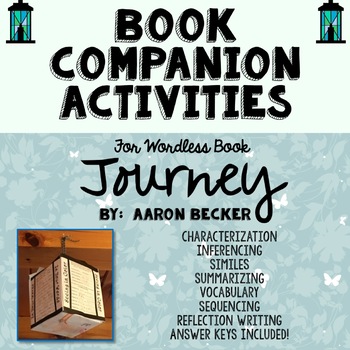
Journey by Aaron Becker, Wordless Book Companion, Project

Flotsam, Chalk, Journey , Wordless Book Bundle, Projects, Activities
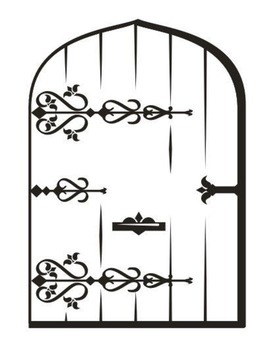
Journey Wordless Book Creative Writing Project

"small things" mental health - wordless book - coping with anxiety stress bundle

Lisa's Trip - Wordless Book & How to Use

Wordless Book Narrative Writing

- Google Docs™
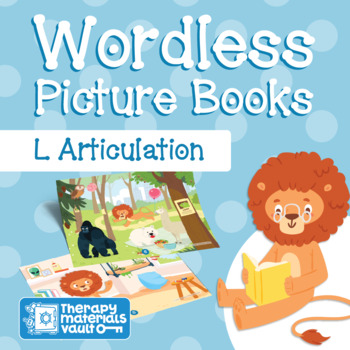
Wordless Picture Book (L Articulation)

“The Paper Boat: A Refugee Story.” Book review and inclusive activities
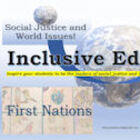
- Google Drive™ folder
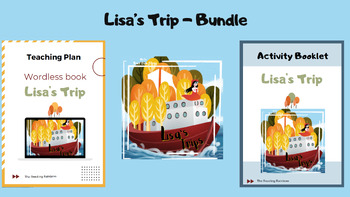
Lisa's Trip - Bundle
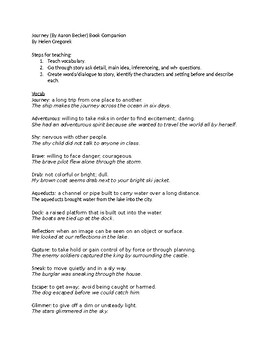
Journey Book Companion

Journey by Aaron Becker Reading Comprehension

Wolf in the Snow by Matthew Cordell 15 Book Extension Activities NO PREP
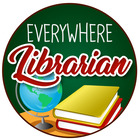
Literary Analysis Support for The Arrival by Shaun Tan

- Word Document File
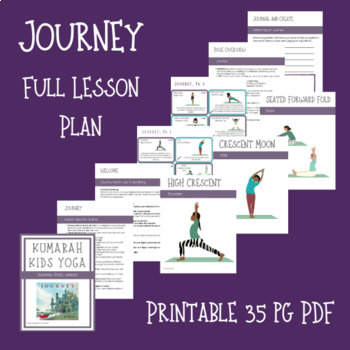
Yoga Literacy Lesson Plan to the book Journey by Aaron Becker
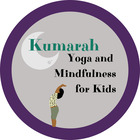
Quest & Return Aaron Becker Bundle (writing, reading response, predict, infer)

Journey by Aaron Becker Lesson Plan and Activities

Journey by Aaron Becker Lesson Plan and Google Activities
- Google Apps™
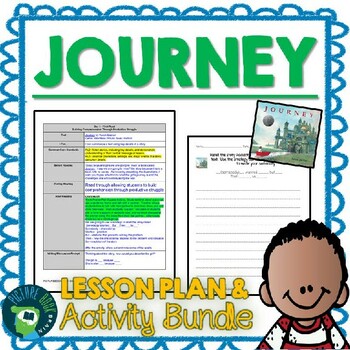
Journey by Aaron Becker Lesson Plan, Google Activities & Dictation

Journey by Aaron Becker Lesson Plan, Activities & Dictation
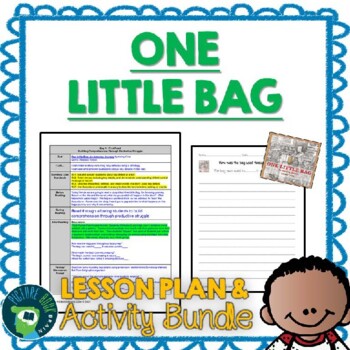
One Little Bag by Henry Cole Lesson Plan and Google Activities
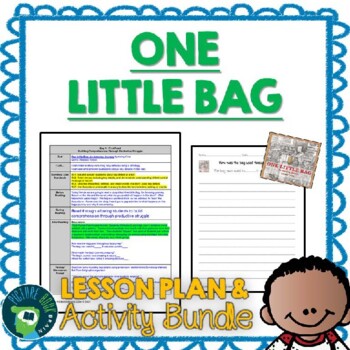
One Little Bag by Henry Cole Lesson Plan and Activities
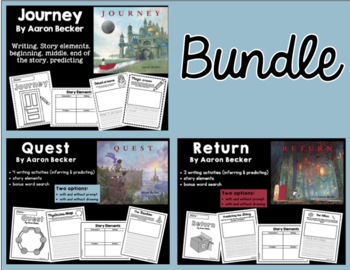
Journey , Return & Quest (writing, response, predict, infer) Aaron Becker BUNDLE

Journey , Quest, and Return by Aaron Becker Lesson Plans & Activities
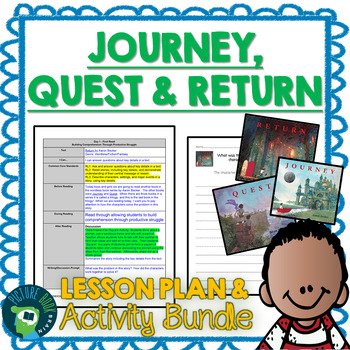
Journey , Quest, and Return by Aaron Becker Lesson Plans & Google Activities
- We're hiring
- Help & FAQ
- Privacy policy
- Student privacy
- Terms of service
- Tell us what you think

IMAGES
VIDEO
COMMENTS
Journey by Aaron Becker. Journey by Aaron Becker is a wordless picture book that promotes confidence, independence, perseverance, problem solver, risk-taker and thinkers. A lonely girl escapes through a mysterious door in her bedroom wall, holding a red crayon. She finds herself in a strange and beautiful forest.
The Journey by Francesca Sanna is an emotive picture book that deals with conflicts, immigration, compassion, independence and courage. A mother makes the unimaginable decision to escape war, detailed by one of her two children. After the death of their father, they begin their gruelling journey to safety. They face menacing guards, a towering ...
As you explore the illustrations in the book, try to find features that might be clues about the rest of the story. Think of your own captions, speech / thought bubbles to add to the illustrations. Make a word bank that includes words you could use to describe the people, places and events in the story. Create a narrative version of the story.
Grades: 1st, 2nd, 3rd, 4th. Summary: A lonely girl draws a magic door on her bedroom wall and through it escapes into a world where wonder, adventure, and danger abound. Red marker in hand, she creates a boat, a balloon, and a flying carpet that carry her on a spectacular journey toward an uncertain destiny. When she is captured by a sinister ...
The Teaching Couple - This web page on TES provides a 5-week writing unit for teaching "The Journey" by Francesca Sanna to students in Key Stage 2 (ages 7-11). The lesson plans include learning objectives, a starter activity, a main activity that involves reading and discussing the book, and a complete task.
Age range: 5-7. Resource type: Worksheet/Activity. Videos. File previews. ppt, 1.12 MB. ppt, 2.79 MB. A couple of lessons I made linked to the picture book Journey. Pupils really enjoyed this and I also linked it to the trailer on YouTube. Creative Commons "Sharealike".
In this glorious - and completely wordless - picture book, the timeless appeal of Aaron Becker's story is more than matched by his illustrations, which crackle with so much expressive energy that readers barely notice the absence of text. Becker worked as a designer in the film industry before creating Journey.
It destroys the family's life and is chasing them. Page 3: the black creature has engulfed them, taken away the children's father and made their lives black. Page 4: a picture of the family is juxtaposed with a picture of the mother comforting her children, without the father. The black hands still threaten.
This activity kit for Aaron Becker's "wordless" picture books consists of printables, activities and a guide for reading a wordless book and can be used when reading, teaching, or discussing Journey, Quest, and Return (together or individually). For additional context on using picture books with young readers to reinforce reading concepts, this video interview with author Aaron Becker provides ...
Suggested by sarah_hodgson88. Journey, a wordless picture book written by Aaron Becker, is brought to life through it's beautiful and detailed illustrations. The book is designed to spark imagination in children to create their own stories based on the pictures inside. A little girl draws a magic door in her bedroom and opens up a whole new ...
THE JOURNEY TRILOGY ACTIVITY KIT Welcome! Aaron Becker invokes a sense of wonder in his wordless picture books about a young girl who seeks the attention of her busy family and instead discovers a fantastic world on the other side of her bedroom wall. His Journey trilogy is an ode to the imagination, proving that a little creativity can
follows her journey through muted scenes where dilemmas are faced by using the crayon to control her destiny. Teachers wishing to explore how using visuals can develop understanding and enjoyment of books will find Journey an excellent place to start. Picture books can be challenging so ensuring preparation and familiarity with content is ...
A beautiful wordless picture filled with adventure and wonder. Our protagonist feels alone in the grey city that surrounds her and traps her. She wishes to travel and to see the world and for this to happen she will have to do it for herself. With just a swipe of chalk and a lot of imagination she travels to far away lands filled with wonder ...
Introducing our meticulously crafted teaching unit that draws inspiration from the powerful narrative of Francesca Sanna's "The Journey". This 5-week writing unit is designed to captivate students while fostering a deep understanding of the refugee experience. "The Journey" is Francesca Sanna's debut picture book that beautifully ...
The sessions could be added to with art activities and through further learning in PSHE, Science, Geography and History. Synopsis of Text: The winner of the prestigious Caldecott Honor, and described by the New York Times as 'a masterwork', Aaron Becker's stunning, wordless picture book debut about self-determination and unexpected friendship ...
The Journey by Francesca Sanna Flying Eye Books (Primary/lower secondary) This beautifully illustrated picture book introduces a powerful and moving perspective on migration for readers of all ages. Told through the eyes of a young girl, the story explores the unimaginable decisions made as a mother
Comprehension Strategies - Journey. This mini unit will explicitly step students through using key comprehension strategies to understand a wordless picture book. This unit uses the text 'Journey' by Aaron Becker and gives students the opportunity to explore and analyse the rich illustrations and complex story plot. Students will also use ...
Age group: 6-8, 9-11. This resource will support you to use the wordless picture book Journey by Aaron Becker as part of a whole school project. The resource contains differentiated cross-curricular activities for Early, First and Second levels, adaptable to use as part of a whole school core book project, and includes ideas to support ...
Book and activities: The Journey. This beautifully illustrated picture book introduces a powerful and moving perspective on migration for readers of all ages. Told through the eyes of a young girl, the story explores the unimaginable decisions faced by a mother and her two children as they are forced to flee their home and everyone they know to ...
The Journey Trilogy. Hardcover - November 7, 2017. by Aaron Becker (Author, Illustrator) 4.9 36 ratings. See all formats and editions. Book Description. Editorial Reviews. Get swept away on a breathtaking journey. . . . Now you can experience the entire trilogy by Caldecott Honoree Aaron Becker in one beautiful boxed set.
The Journey by Neil Griffiths is a lovely rhyming story for KS1 - great for your journeys or transport topic! what adventures are in store?'. This rhyming story takes you on a magical journey with the little red boat that the boy once lost. As the boat slipped from his grasp, the boy watched sadly as it disappeared from view.
Journey by Aaron Becker, Wordless Book Companion, Project. Created by. Cathy Ruth. This unique book companion will engage your students as they learn to think critically about this delightfully complex story. The 3-D lantern project format includes inferencing, illustration prompts, sequencing, text-to-self application, characterization, simile ...
Based on her own interactions with people forced to seek a new home, and told from the perspective of a young child, Francesca Sanna has created a beautiful and sensitive book that is full of significance for our time. For more help, support and resources for international new arrivals in your classroom, please visit.